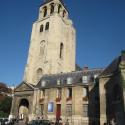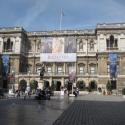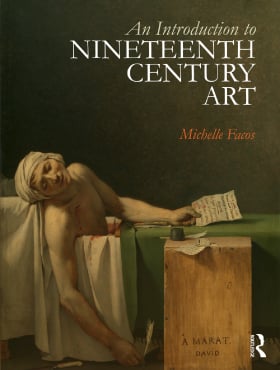Aldrich, Megan. Gothic Revival. London: Phaidon, 1994
Chapter 4
ROMANTICISM
Romanticism was an anti-establishment movement characterized by ambiguity, complexity, and uncertainty. Romantic artists privileged individualism over convention. They experimented with new subject matter, compositions, and techniques in order to discover visual languages that effectively communicated their personal ideas and experiences.
Artists and Artworks:
Readings:
Boime, Albert. Art in the Age of Bonapartism, 1800-1815. Chicago, IL: University of Chicago Press, 1990
Bryson, Norman. Tradition and Desire: From David to Delacroix. Cambridge and New York: Cambridge University Press, 1984
Burke, Edmund. A Philosophical Enquiry into the Origins of our Ideas of the Sublime and Beautiful (1757), Adam Philips, ed. Oxford and New York: Oxford University Press,1990
Eitner, Lorenz. Neoclassicism and Romanticism 1750-1850, vol. 1: Enlightenment and Revolution. Englewood Cliffs: Prentice Hall, 1970
Frank, Mitchell Benjamin. German Romantic Painting Redefined: Nazarene Tradition and the Narratives of Romanticism. Aldershot and Burlington, VT: Ashgate, 2001
Grewe, Cordula. Painting the Sacred in the Age of Romanticism. Farnham and Burlington, VT: Ashgate, 2009
Hobsbawm, Eric. The Age of Revolution: 1789-1848. New York: Vintage Books
Morowitz, Laura. Artistic Brotherhoods in the Nineteenth Century. Aldershot and Burlington, VT: Ashgate, 2000
Paley, Morton D. The Apocalyptic Sublime. New Haven, CT and London: Yale University Press, 1986
Ribner, Jonathan P. Broken Tablets: The Cult of the Law in French Art from David to Delacroix. Berkeley, CA: University of California Press, 1993
Saul, Nicholas. The Cambridge Companion to German Romanticism. Cambridge and New York: Cambridge University Press, 2009
Vaughan, William. Romanticism and Art. New York and London: Thames and Hudson, 1999
Wakefield, David F. The French Romantics: Literature and the Visual Arts, 1800-1840. London: Chaucer, 2007




 Buy the Book
Buy the Book